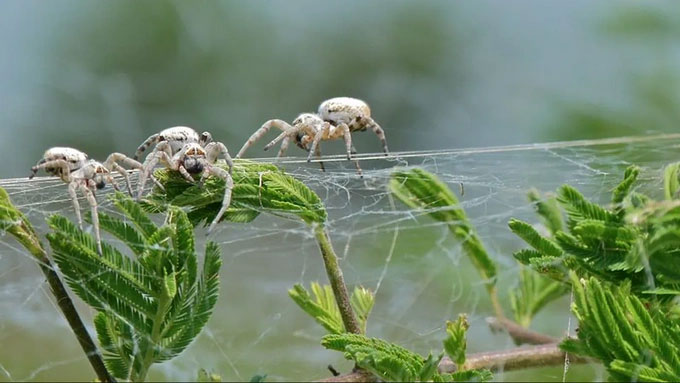Spiders are not inherently social animals, yet they seem to be evolving to accomplish various tasks, notably hunting together.
One of the conditions for social animals is having a larger brain size. This is often evidenced in various mammal species. However, even some very small creatures like spiders exhibit a certain level of social behavior.

The African social spider (Stegodyphus dumicola) demonstrates sociability among individuals, indicating the presence of some social traits (Photo: Nature Communications).
According to Professor Alexander Mikheyev from the Australian National University, although spiders lack brains, they distribute nerve cells throughout their bodies. This allows the nervous systems of certain spider species to develop better than those of other similar-sized species, clearly exhibiting social behaviors.
To reach this conclusion, Professor Mikheyev and his colleagues identified specific gene sequences from five spider species, including both social and common spiders, revealing changes often associated with social behavior, despite the absence of any direct relationships.
This contrasts with previous genetic studies on insects, which showed low-level overlaps in genes related to the evolution of social behavior in bees and some other species.
In practical experiments, the research team demonstrated the behavior of the Australian hunting spider (Delena cancerides), which not only refrained from attacking each other but also allowed other spiders to join in their hunting activities.
According to Professor Mikheyev, this behavior is rare for this species, as sharing space has already been a challenge for them.
“Based on the behavior of spiders, they are quite aggressive, making mutual attacks merely a matter of time,” Professor Mikheyev stated. “However, in some specific cases, we observed that spiders were able to cooperate in hunting.”
Although the research team cannot definitively explain this behavior, they suggest that sociality in spiders may have developed over a long period for various reasons, such as facing common enemies or when food sources are limited.


















































